
Master the Santol Fruit Tree: Essential Steps for Successful Growth
Share
Cultivating a santol fruit tree can transform any garden into a tropical paradise, offering not only stunning visual appeal but also a bounty of delicious fruit. This guide delves into the essential steps for successfully growing this exotic tree, including understanding its unique origins and mastering the care it requires for optimal growth.
However, many aspiring gardeners face challenges in nurturing this tropical gem. What are the key factors that can make or break their efforts? Exploring the intricacies of the santol fruit tree will uncover the secrets to thriving plants and abundant harvests.
What to grow Santol Tree in your garden?
Successful growth of the Santol fruit tree involves several essential steps, including:
- Selecting the right location
- Ensuring proper soil conditions
- Providing regular care such as watering and fertilization
These practices are crucial for optimal tree health and fruit production. For instance, adequate sunlight and effective soil drainage are vital features that significantly enhance the tree's growth. Additionally, implementing pest management strategies can lead to improved fruit yield. By understanding and applying these practices, gardeners can enjoy the many benefits of cultivating a healthy Santol fruit tree.
1. Understand the Santol Fruit Tree: Origin and Growing Conditions
The plant known as the santol fruit tree, scientifically referred to as Sandoricum koetjape, is native to the tropical regions of Southeast Asia, particularly in countries like Malaysia, Cambodia, and southern Laos. This plant thrives in warm, humid climates and prefers well-drained, nutrient-rich soil. It requires full sun exposure and can withstand temperatures ranging from 60°F to 100°F. For optimal growth, gardeners should:
- Space the santol fruit tree approximately 20 to 25 feet (6 to 7.5 meters) apart.
- Fertilize them twice a year using Everglades Farm's professional-grade fertilizers, which enhance nutrient uptake and promote vigorous growth.
Notably, certain special varieties of the santol fruit tree can bear fruit in just 3 to 4 years, while those santol fruit trees grown from seeds typically begin producing after 5 to 7 years. By replicating the natural habitat of the Santol species and utilizing Everglades Farm's Fast-Growing Plants collection—featuring varieties selected for rapid growth and high yield—gardeners can significantly enhance both growth and yield. Mature santol fruit trees can produce between 18,000 and 24,000 fruits annually, based on a 30-year-old seedling in the Philippines.
Understanding these essential conditions, along with the need for consistent rainfall and the santol fruit tree's resilience during dry periods, is crucial for anyone aspiring to cultivate a thriving fruit-bearing plant in their home garden.
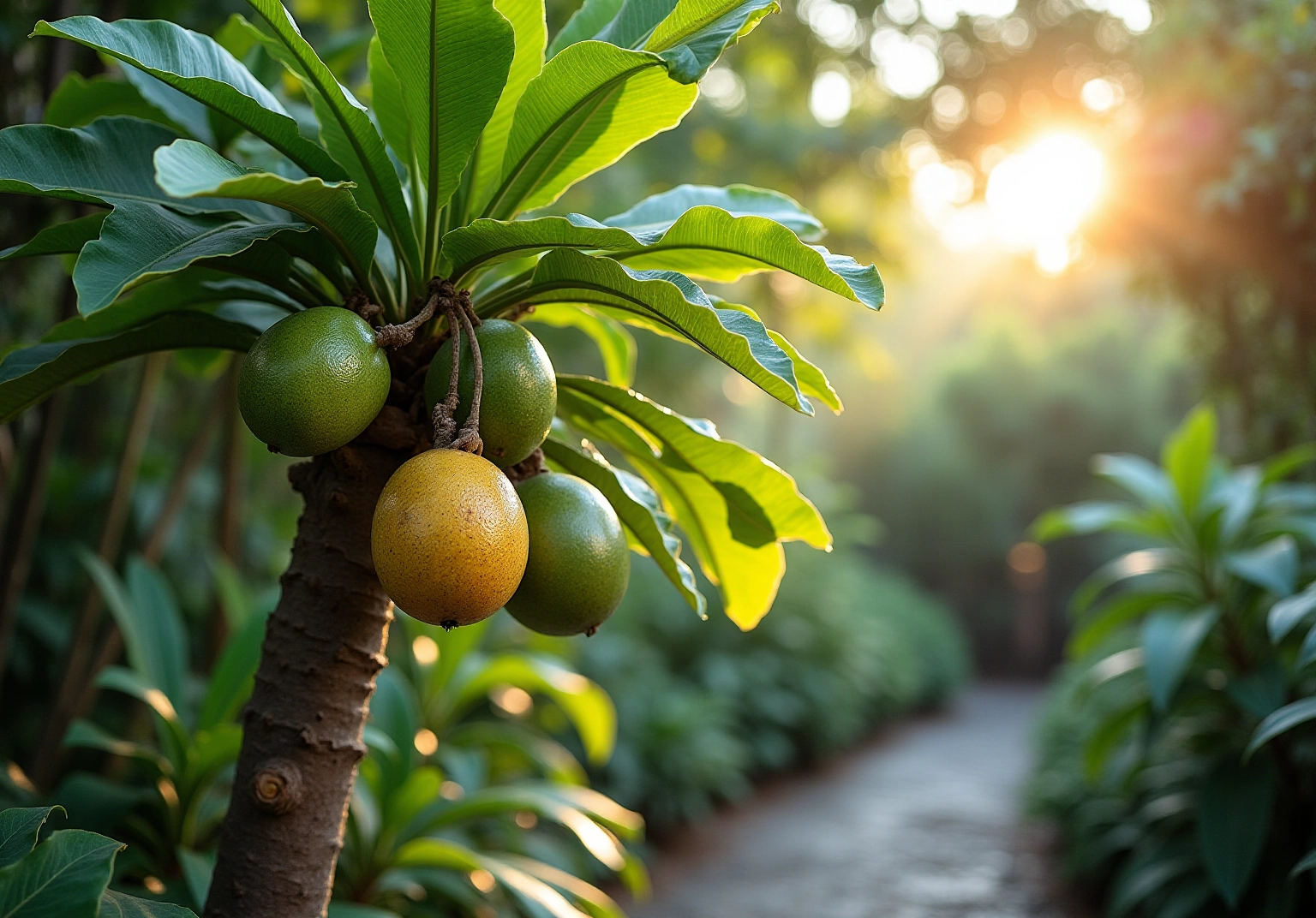
2. Prepare Your Garden: Essential Requirements for Planting Santol
To prepare your garden for planting a Santol tree, follow these essential steps:
-
Choose the Right Location: Select a spot that receives full sunlight for at least 6-8 hours a day, ensuring the area is sheltered from strong winds. This optimal exposure is crucial for the tree's growth and fruit production.
-
Ground Preparation: Examine the pH level of the soil; Santol trees thrive in slightly acidic to neutral ground, ideally between pH 6.0 and 7.0. Enhance the soil by incorporating organic matter, such as compost, to boost fertility and improve drainage. The santol fruit tree is versatile and can flourish in various soil conditions, making it a robust option for gardeners.
-
Drainage: Ensure the planting area has excellent drainage. If the soil retains moisture, consider constructing elevated beds or mounds to prevent root decay, which can be detrimental to the plant's health.
-
Irrigation: Setting up an efficient irrigation system is crucial. Calculate water needs based on plant density and soil type to maintain optimal moisture levels. Drip irrigation is recommended as it delivers water directly to the roots, minimizing wastage and ensuring the tree receives adequate hydration.
-
Spacing: When planting multiple trees, space them at least 15-20 feet apart. This distance accommodates their mature size and promotes adequate air circulation, reducing the risk of disease.
Furthermore, the santol fruit tree is fast-growing and can yield high returns, making it a financially sound option for home gardeners. Their low maintenance requirements further enhance their appeal, allowing you to enjoy the fruits of your labor with minimal effort.
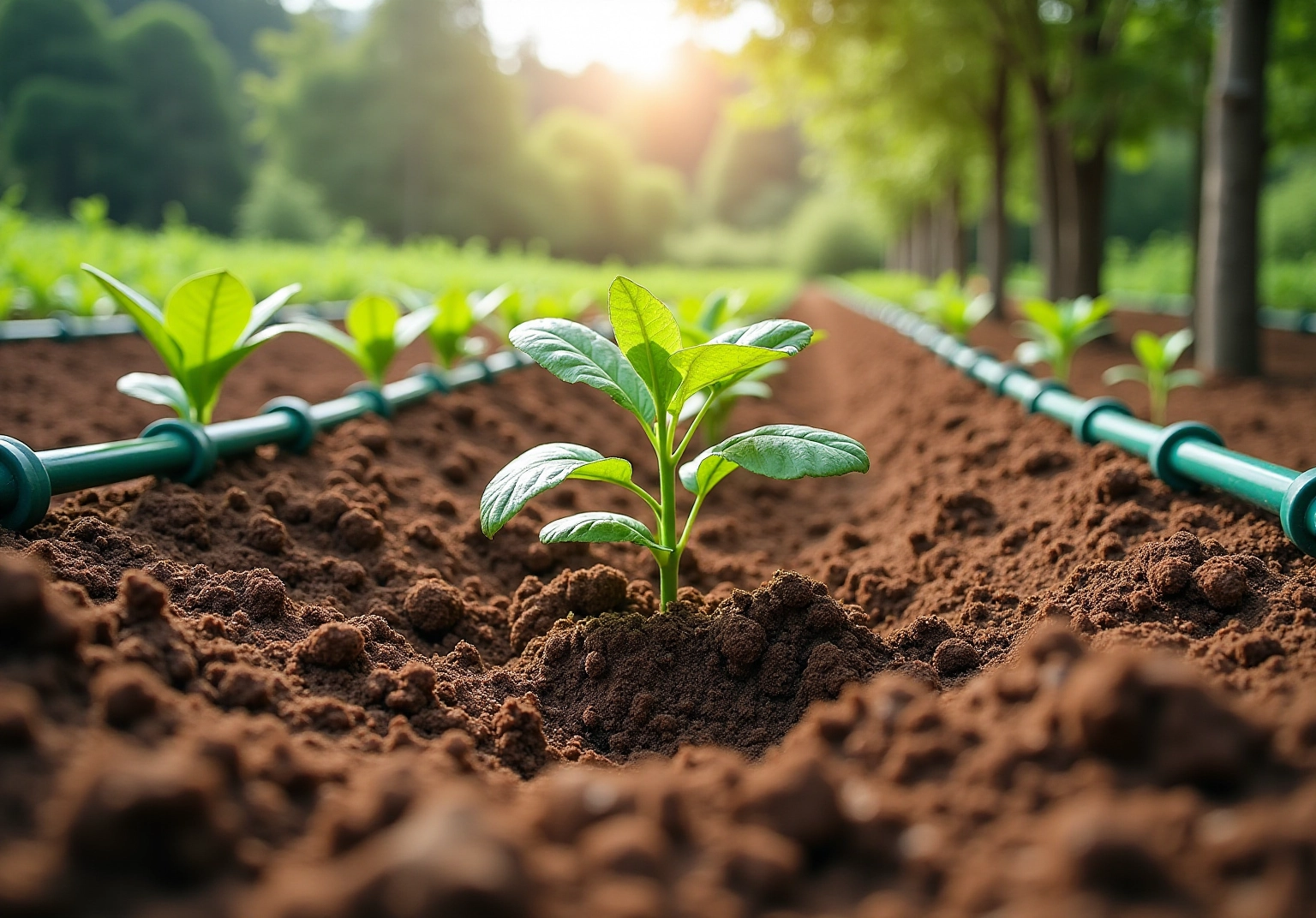
3. Plant Your Santol Tree: Step-by-Step Planting Instructions
To successfully plant your Santol tree, follow these essential steps:
- Dig the Hole: Create a hole that is twice as wide and 8-10 cm deeper than the root ball. This allows ample space for the roots to spread and establish themselves. Ensure the soil is loamy, abundant in organic matter, and well-draining for optimal development.
- Remove the Plant from the Pot: Carefully take the Santol plant out of its pot, ensuring minimal disturbance to the roots. If the roots are tightly bound, gently loosen them to promote development.
- Place the Tree in the Hole: Position the tree centrally in the hole, ensuring the top of the root ball is level with the surrounding earth to promote healthy growth.
- Backfill the Hole: Refill the hole with the dug-up earth, lightly tamping it down to eliminate air pockets. Moisten the ground as you backfill to assist it in settling around the roots.
- Water Thoroughly: After planting, give the plant a deep watering to aid root establishment. Keep steady moisture in the ground for the initial weeks, preventing waterlogging to guarantee ideal development.
Additionally, consider these best practices for planting tropical fruit trees like the Santol and Soursop:
- Choose the Right Location: Select a spot that receives full sunlight and has good air circulation to promote healthy growth.
- Monitor Soil Conditions: Ensure the soil is well-draining and rich in nutrients. Frequently inspect for pests and illnesses that can impact young plants.
- Maintain Humidity: Santol plants flourish in humid conditions, ideally around 80%. If your area is dry, consider misting the leaves or using mulch to retain moisture.
- Regular Pruning: Trim the plant to preserve its shape and health, ideally during the dormant season or after fruiting. This encourages better air circulation and sunlight penetration.
- Fertilization: For optimal development, consider using a balanced fertilizer with an N-P-K ratio of 10-10-10 during the growing season.
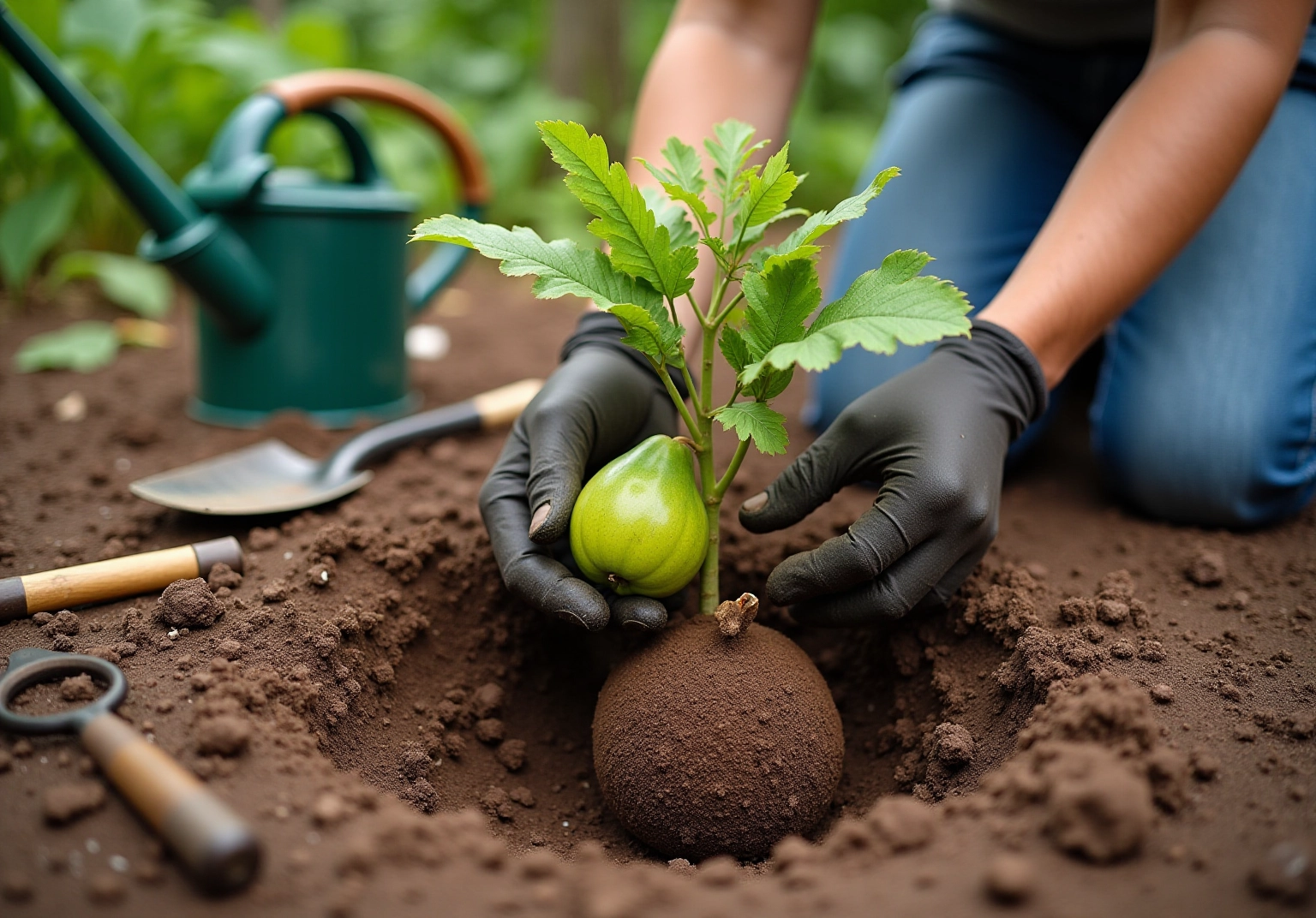
4. Care for Your Santol Tree: Watering, Fertilization, and Pest Management
To ensure the healthy growth of your Santol tree, it is essential to follow these care guidelines:
-
Watering: Regular watering is crucial, especially during dry spells. The soil should remain consistently moist but not waterlogged; allow it to dry slightly between waterings to prevent root rot. Thorough watering promotes strong root development, which is vital for the plant's stability and expansion.
-
Fertilization: During the growing season, typically in spring and summer, apply a balanced fertilizer with an N-P-K ratio of 10-10-10. This ratio supports healthy growth and fruit production. It is important to adhere to the manufacturer's guidelines for application rates to avoid over-fertilization, which can harm the plant.
-
Pest Control: Diligently monitor your fruit plant for common pests such as aphids and scale insects. If infestations occur, treat them promptly with organic insecticidal soap or neem oil. Regular examinations of the leaves for signs of illness or pest damage are essential; early detection allows for swift action, ensuring the plant remains healthy and fruitful.
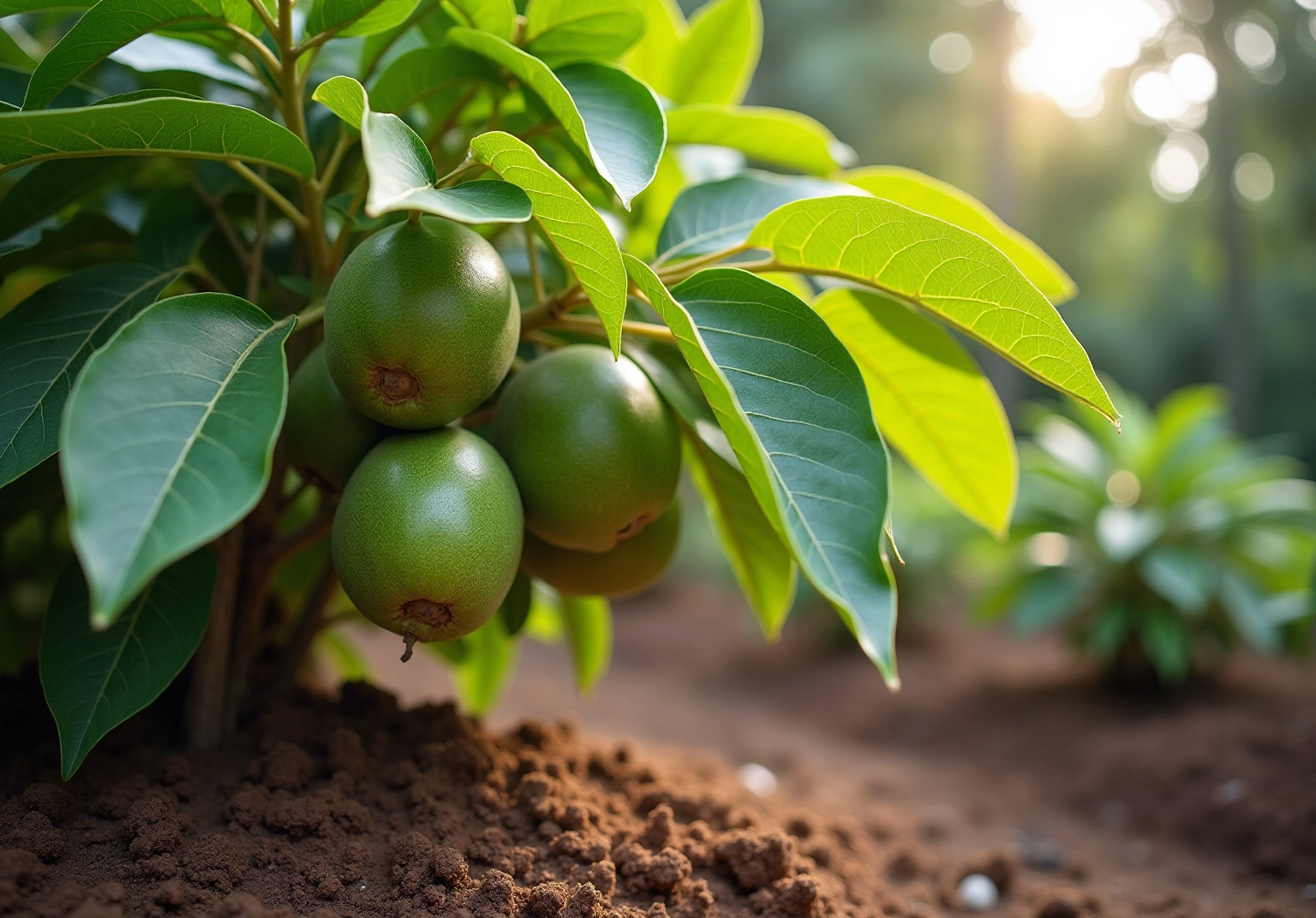
5. Troubleshoot Common Issues: Solutions for Healthy Santol Growth
Common issues with the santol fruit tree can be effectively managed through targeted strategies that enhance its growth and fruit production.
-
Yellowing Leaves: This symptom often indicates nutrient deficiencies, particularly in iron or zinc, or it may result from overwatering. To address this issue, assess the moisture levels in the soil. If the soil is excessively dry, applying a balanced fertilizer can help restore essential nutrients and promote healthy foliage.
-
Poor Fruit Production: A lack of fruit can arise from inadequate sunlight or insufficient pollination. Ensure that your fruit-bearing plant receives full sunlight. Additionally, consider planting a second tree nearby, as many varieties of Santol are self-sterile and benefit from cross-pollination, which can significantly enhance fruit yield.
-
Pest Infestations: Regular inspections for pests are vital for maintaining plant health. If an infestation is discovered, promptly treat it using organic pest control methods to minimize damage. Continually monitor the plant's health and adjust care practices as necessary to sustain its vitality.
By addressing these common challenges, you can cultivate a thriving santol fruit tree that yields abundant fruit. Furthermore, maintaining optimal plant health for your santol fruit tree involves monitoring key parameters such as pH, electrical conductivity (EC), and temperature, all of which are essential for its overall well-being.
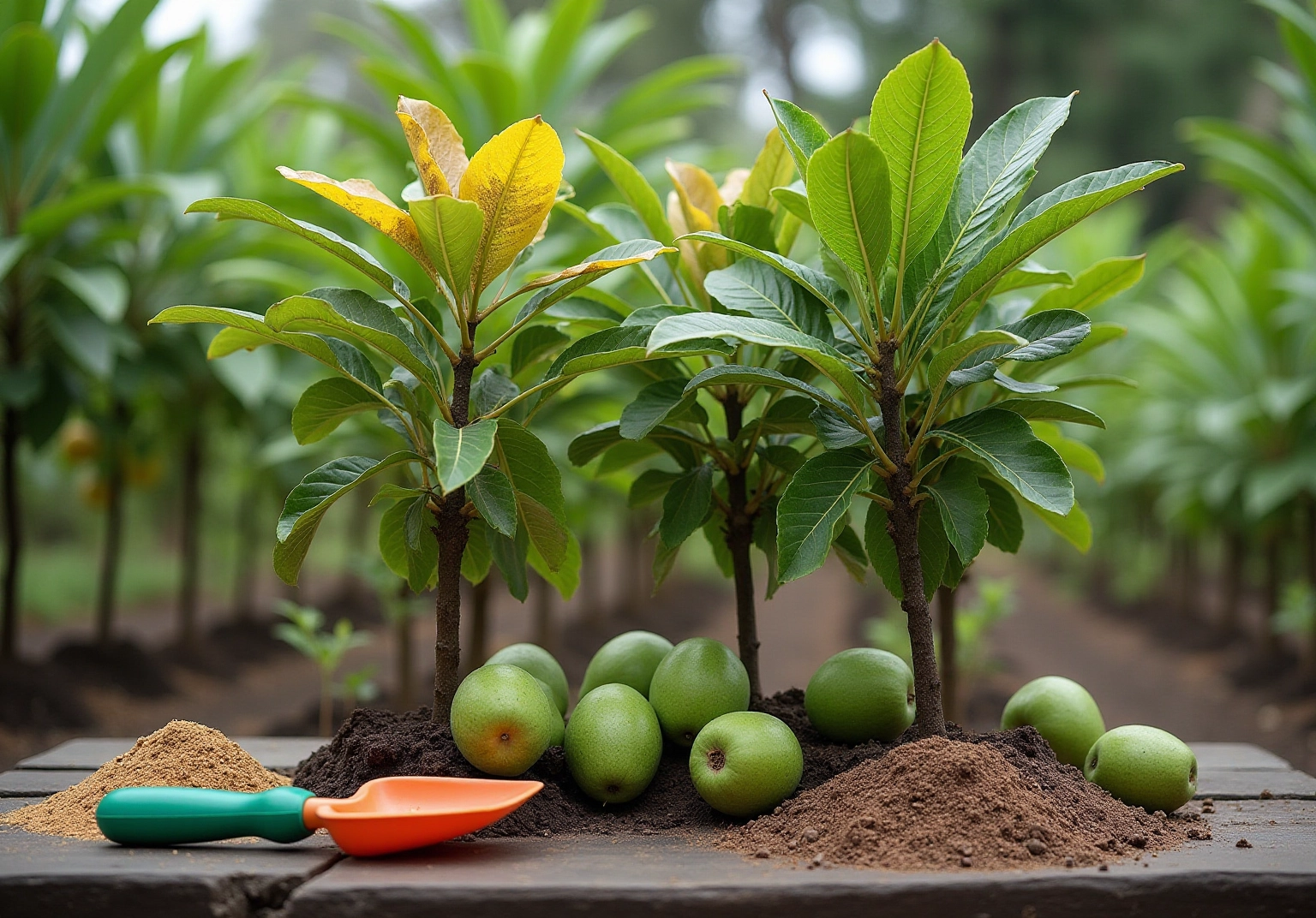
Conclusion
Mastering the cultivation of the santol fruit tree requires an understanding of its specific needs and providing appropriate care to ensure successful growth. This tropical gem, native to Southeast Asia, flourishes in warm, humid environments and necessitates well-drained, nutrient-rich soil. By adhering to the outlined steps for preparation, planting, and ongoing care, gardeners can nurture a healthy tree that yields a remarkable harvest.
Key insights include:
- The significance of selecting the right location
- Maintaining suitable soil conditions
- Implementing consistent care practices such as watering, fertilization, and pest management
Identifying common issues like yellowing leaves or subpar fruit production enables timely interventions, ultimately resulting in a thriving santol tree. With the proper approach, this fast-growing fruit tree can transform any garden into a tropical paradise.
Embarking on the journey of cultivating a santol fruit tree not only enhances the garden but also supports sustainable living. As more individuals delve into home gardening, the santol tree emerges as a rewarding choice, providing both aesthetic appeal and fruitful yields. Begin your journey with the santol fruit tree today—discover the joy of nurturing a plant that infuses flavor and vitality into your surroundings.
Cultivate Your Own Tropical Paradise with Santol Trees!
- 👉🏻 Buy Santol tree for sale
- 👉🏻 Explore Fruit trees collection
- 👉🏻 About Everglades Farm
Frequently Asked Questions
What is the origin of the santol fruit tree?
The santol fruit tree, scientifically known as Sandoricum koetjape, is native to the tropical regions of Southeast Asia, particularly in Malaysia, Cambodia, and southern Laos.
What are the ideal growing conditions for the santol fruit tree?
The santol fruit tree thrives in warm, humid climates, prefers well-drained, nutrient-rich soil, and requires full sun exposure. It can withstand temperatures ranging from 60°F to 100°F.
How far apart should santol fruit trees be planted?
Santol fruit trees should be spaced approximately 20 to 25 feet (6 to 7.5 meters) apart.
How often should santol fruit trees be fertilized?
Santol fruit trees should be fertilized twice a year using professional-grade fertilizers to enhance nutrient uptake and promote vigorous growth.
How long does it take for santol fruit trees to bear fruit?
Certain special varieties of the santol fruit tree can bear fruit in just 3 to 4 years, while trees grown from seeds typically begin producing after 5 to 7 years.
What is the annual fruit production of mature santol fruit trees?
Mature santol fruit trees can produce between 18,000 and 24,000 fruits annually, based on a 30-year-old seedling in the Philippines.
What are the essential steps for preparing a garden for planting a santol tree?
Essential steps include choosing a location with full sunlight for 6-8 hours a day, examining and enhancing soil pH (ideally between 6.0 and 7.0), ensuring excellent drainage, setting up an efficient irrigation system, and spacing multiple trees at least 15-20 feet apart.
What type of irrigation is recommended for santol fruit trees?
Drip irrigation is recommended as it delivers water directly to the roots, minimizing wastage and ensuring the tree receives adequate hydration.
Are santol fruit trees low maintenance?
Yes, santol fruit trees have low maintenance requirements, making them appealing for home gardeners who want to enjoy fruit with minimal effort.


